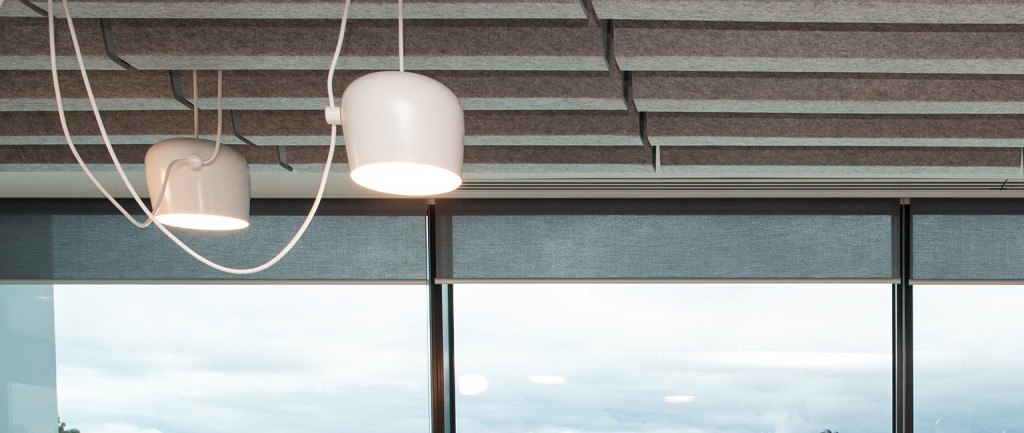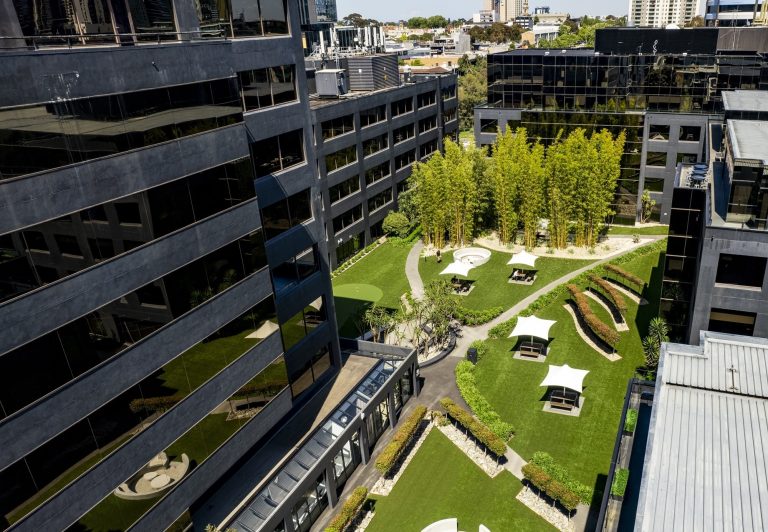How to: Cut energy costs in the office

Let’s not beat around the bush. When it comes to your business, it all boils down to the bottom line.
How much am I spending and how much am I bringing in?
Want to spend less? Shaving your utility bills is a logical first step.
We spoke to the experts about how best to make a significant dent in your overheads.
Knowledge is power

You can’t change what you haven’t measured, so it can pay to have sub-meters installed in your office or workplace.
Sub-meters measure how much power is being used in specific areas and then feeds that data back to you, so that you can determine where you can make improvements.
Damon Cuming, from sustainable engineering consultancy Irwinconsult, says sub-meters can be extremely precise.
“It’s like, ‘hold on a sec, why does the north-east corner have a three kilowatt electrical load on Saturday night? Is Johnny leaving his computer on overnight or is someone coming in and doing something?’” he says.
“Then you can say, ‘OK, our baseline is this’, and then you can start trimming it back.”
Sub-metering systems have advanced significantly in the last couple of years, so much so that some monitoring companies, like Switch Automation, offer cloud-based metering so you can easily compare each of your buildings against the rest.
“Once you get this data in one place, you can sort of say, ‘Oh, gee, I didn’t realise that my per-square-metre count on kilowatt hours on this building is horrible compared to these buildings’,” Switch Automation chief operating officer Peter Rake says.
“A lot of properties … have a reasonable amount of smarts in them, they’ve just never been operated very efficiently.”
Sustainable standard: The Royal Australian Mint goes solar
Let there be (new) lights

Unsurprisingly, lighting system upgrades are among the easiest and most visible changes that can be made to slash costs in a building.
Cuming says that while the initial cost of upgrading old fluorescent tubes to LEDs is more than replacing it with the same technology, LEDs will be more cost effective in the long run.
LEDs will be more cost effective in the long run.
“Lighting is probably the lowest of the low-hanging fruit. It’s cheap, easy and has good bang for your buck,” he says.
“It’s not an invasive or an intrusive process to change a light. You’re not knocking down walls, you’re not demolishing stuff. You can do it over the weekend and the staff will come back in on Monday and they won’t even know, they’ll just have new lights.”
“LED tubes are currently about threetimes the price of the fluoros – $10 to $12 each versus $3 to $4 each – but not only do you get energy savings, they also last around three times as long, so you have reduced replacement costs as well as reduced costs to dispose of the old fluoros,” he says.
“On average you’re looking at about a two-year payback on this approach.”
Movers: Time to review your energy needs
A breath of fresh air

Overhauling an air-conditioning system sounds like an expensive proposition, but Cuming says it doesn’t have to be, and a few little tweaks can result in a significant reduction in power usage.
Top tips: 5 ways to keep your office cool & energy costs down
“In terms of the air conditioning system, there are some fairly minor upgrades you can do if your system is reasonably old. You can make upgrades to some of the fans and the pumps and you can put a variable speed drives onto fans and pumps,” he says.
“You don’t have to rip out ductwork or go out and replace the chiller on the roof or anything like that. Sometimes you can even keep the same fan itself, you’re just changing the motor or the control of the motor.
“Some of them can literally run at any setting and they will have systems and sensors and controls to say, “right now I need 50% power, right now I need 43% power’. They’re not running any harder than they need to.”
Sometimes, all you need to do is change the motor.
Cuming says the best place to make savings with ventilation and air-conditioning systems is in car parks below office buildings, where there is minimal need for ventilation for large portions of the day.
“They have to have a serious exhaust system for carbon monoxide… but in the morning it’s nothing, nothing, nothing and then the cars come in, and then nothing, nothing, nothing, and the cars go away. There’s nothing in between,” he says.
Be flexible with your staff
A great way to cut down the costs of having staff using your workplace is to not have them there at all.
More and more employers are offering flexible working arrangements and allowing staff to work from home, some of the time, which can have much bigger implications for the company’s overheads.
“This reduces not only the energy use of the office and company but also construction energy to build a smaller building, and transport energy use,” Cuming says.
Allowing your staff to work from home can cut the energy use of the office.
Business owners may be able to buy or rent a smaller, cheaper office if less staff are required to physically be there each day.
Empty offices: Working from home still the way of the future?
Cuming says a mobile staff with laptops can be far cheaper than an office full of employees on desktops, despite the higher cost of buying a laptop over a PC.

“Laptops are more expensive, but they are designed to run a lot more efficiently. They can use less than half the energy of an equivalent PC.”
“A lot of people can have laptops if you provide docking stations and monitors.”







